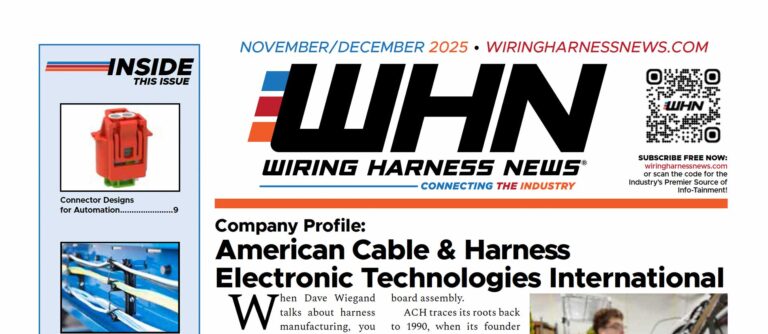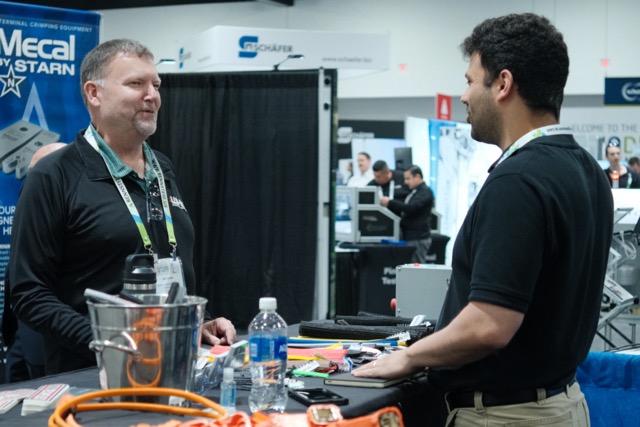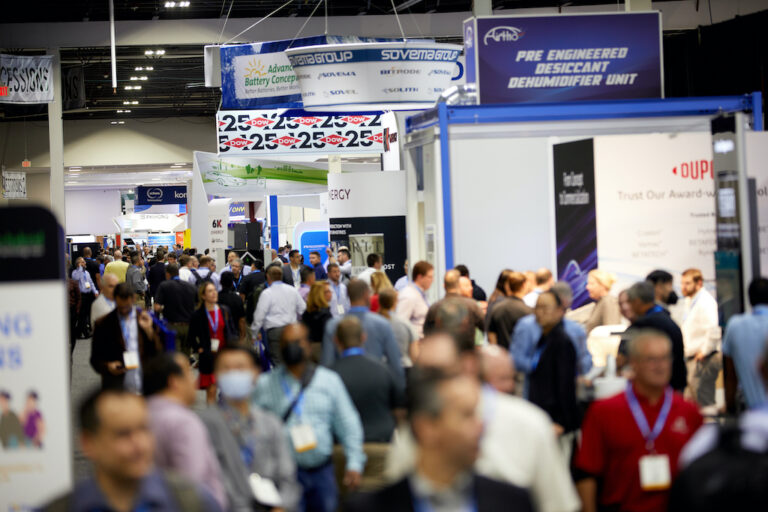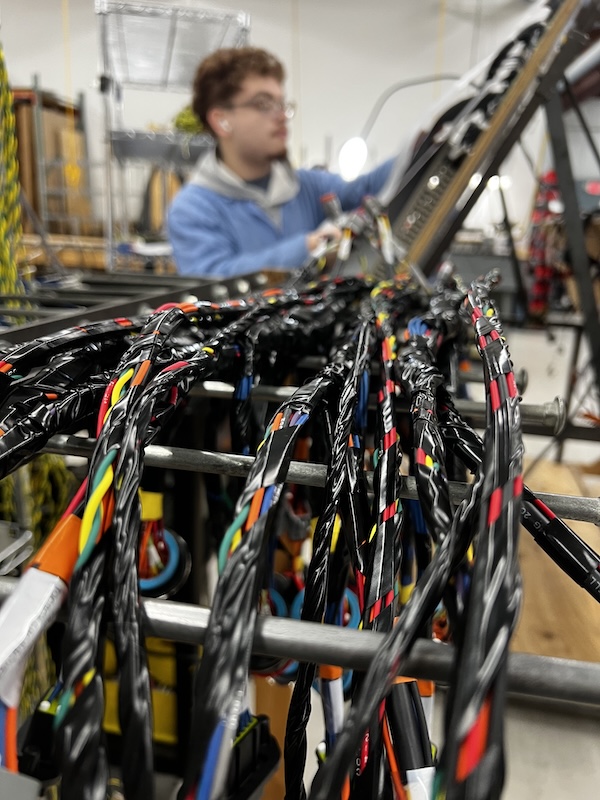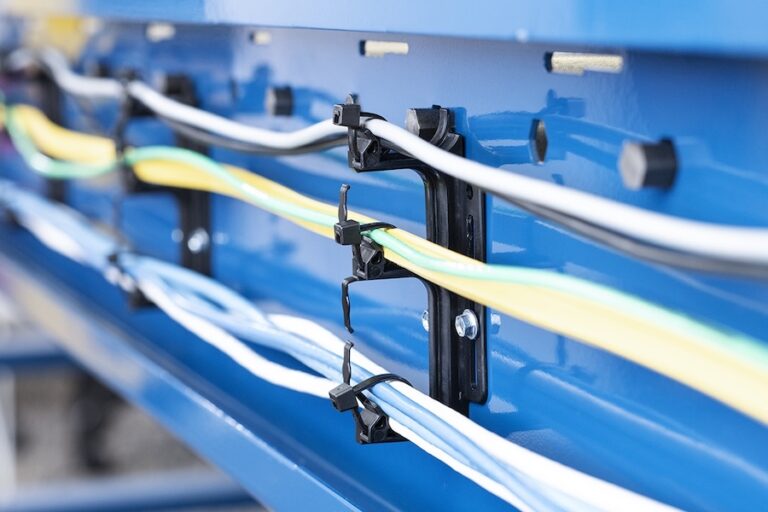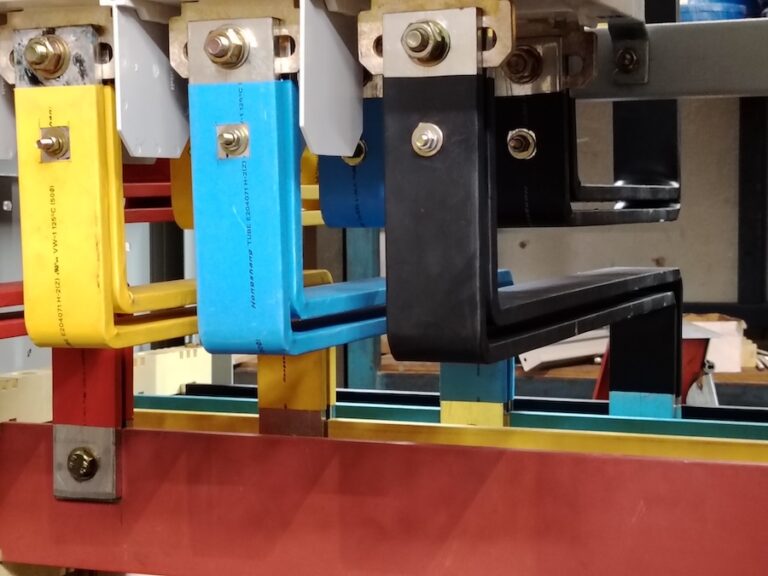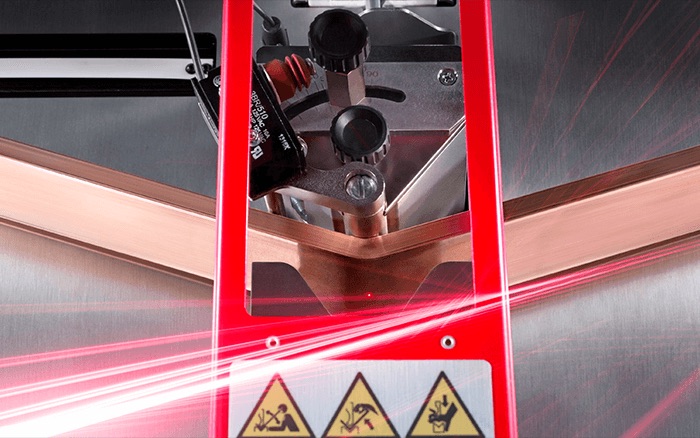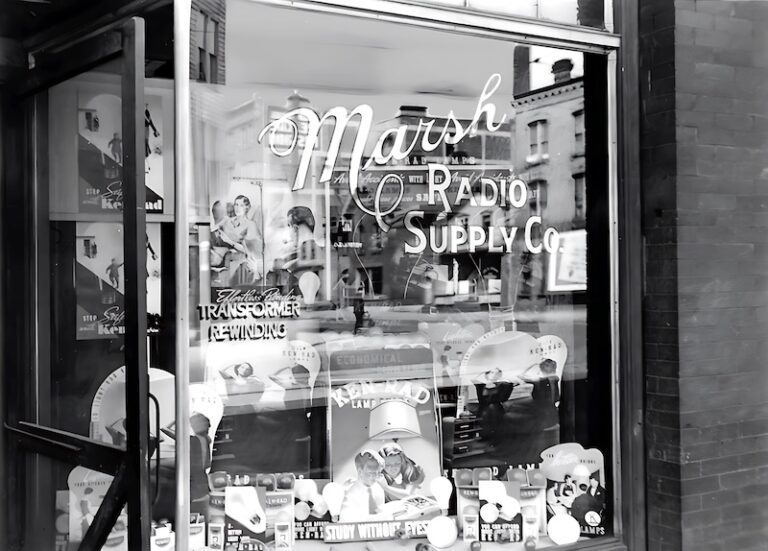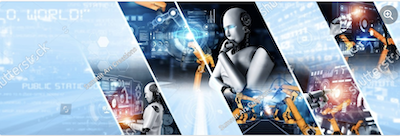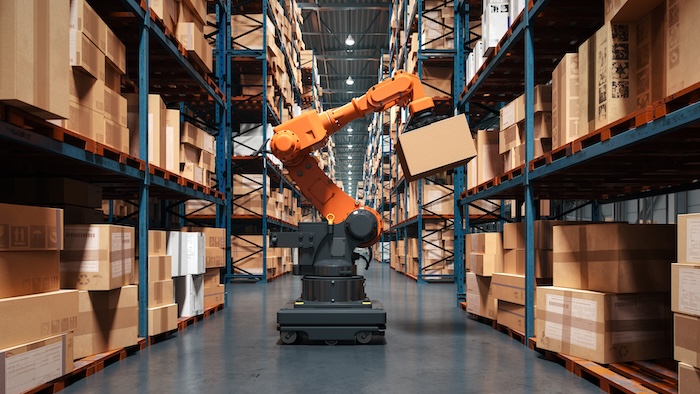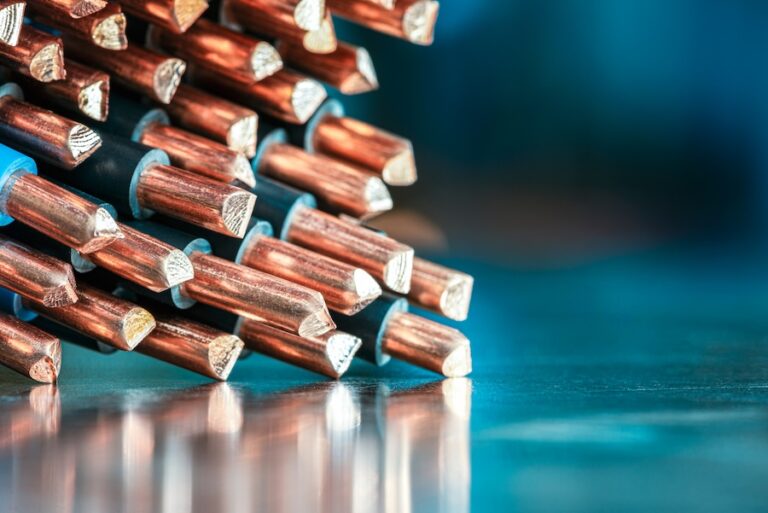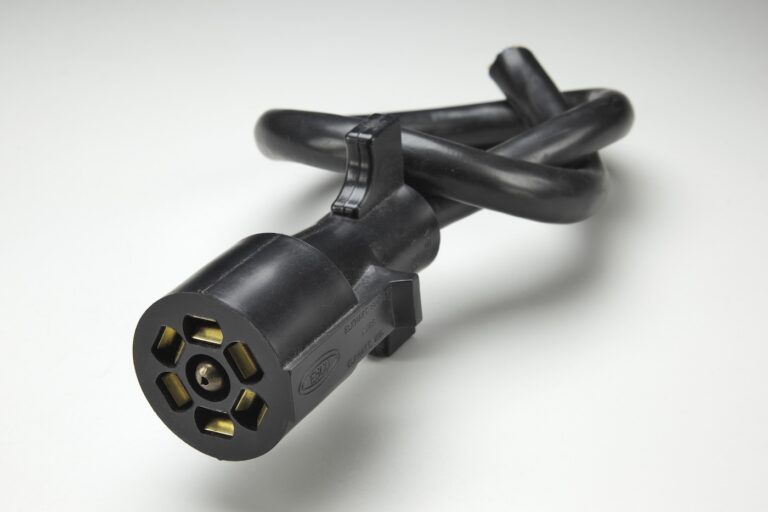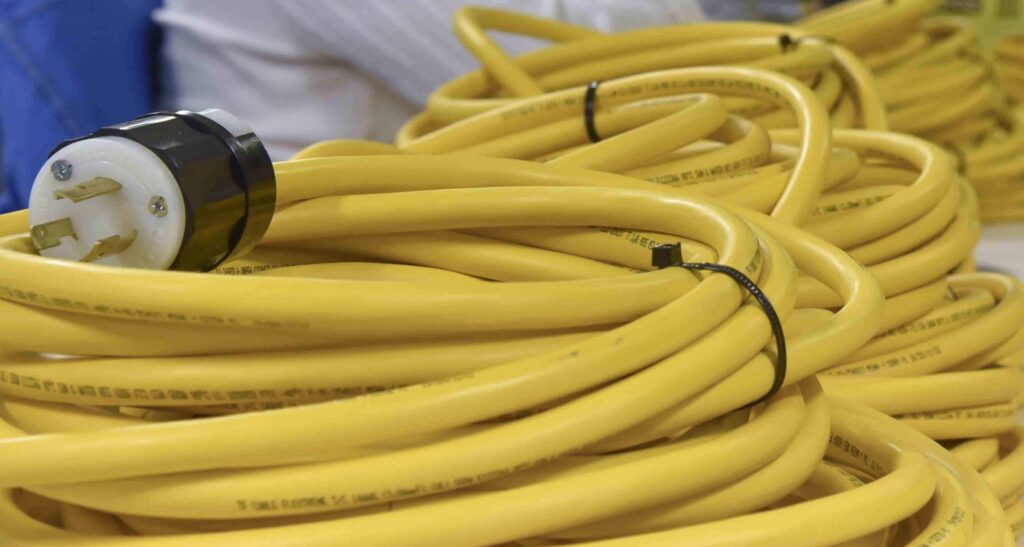Reshoring Opportunities for Harness Manufacturers
A few years back, Harry Moser, Founder and President of the Reshoring Initiative®, came and spoke about his organization at an industry event. The mission of the Reshoring Initiative is to bring good, well-paying jobs back to the US by helping companies more accurately assess their total cost of offshoring products. The goal is to shift the collective thinking that offshore is always cheaper by highlighting its true cost compared to domestic manufacturing. Harry has worked with countless manufacturing companies giving them the ammunition to target these opportunities.
With all that has transpired over the past couple years, it seemed reasonable to reach out to Harry to check on the progress his organization is making, and review some of the tools available to wire harness and cable assembly manufacturers to directly target the reshoring of the complex assemblies that U.S. manufacturers excel at producing.
WHN – How much business is ripe for the picking? How much business can U.S. manufacturers make the case for reshoring?
Harry – Well, ripe for the picking, yes. But many of the apples are high on the branches and will require a little work. If you look at the statistics I provided, the line chart (Figure 1) shows that compared to China, for 8% of the products the U.S. wins on price. We win 32% on total cost of ownership (TCO) considerations. Basically, if you are just looking at the FOB price, very little is reshorable. But based on TCO, 32% is reshorable. The numbers would be higher still if all companies used TCO, since the economy would grow so much more and become more efficient as we rebuilt supply chains here.
Generally speaking, Chinese inflation has been higher than U.S. inflation. I’ve got a chart showing unit labor cost for a bunch of countries including China and the U.S. Our dollar cost per hour of labor has remained flat, while China’s is up 400% since 2000.
WHN – What are some of the tools available to readers from the Reshoring Initiative to convince OEMs that offshore isn’t always cheapest?
The TCO Estimator is a free online software to help companies make better sourcing decisions about offshore vs. domestic. It can also be used to sell against imports. TCO quantifies 29 costs and risks, often balancing a 15% to 20% FOB price disadvantage vs. offshore. The TCO Estimator is recognized on multiple U.S. Department of Commerce websites. Repeated international studies document the value of using TCO instead of FOB price for sourcing and siting decisions. We recently helped one company win a $60 million order vs. a Chinese competitor using the TCO Estimator. It’s useful and it’s free, and that’s always a great combination.
Another great tool is the Import Substitution Program (ISP). A company contacts us and we identify the biggest importers of the products the company produces. We then determine the tonnage being brought in and uncover the offshore sources. Then, the company uses the TCO Estimator to convince that importer to buy from them instead. It’s very simple. It gives you leads, and it gives you a sales tool to close some of those leads.
The conversation goes like this: I see you’re bringing in 20 containers of product a year from China. We’ve automated, and we think we’ve got labor cost down to 15% or 20% of total cost, so the offshore producer can’t be more than 10% or so lower than we are. We’ve calculated 20 points of hidden costs with the TCO calculator so we think you will be 5% better off buying from us.
There is a fee for this. But we are also marketing it through Manufacturing Extension Partnerships (MEPs). These are non-profit affiliates of Commerce, and there’s one in every state. They are there to help small businesses like harness shops. We are marketing through MEPs in Ohio, New York, Illinois and Rhode Island, and other states are considering it. For companies in those states, the MEP‘s pay for our service. Anybody in those states can contact us, or they can contact the MEP and say, ‘Hey we want to play.’ If your state is not on this list and you’re working with an MEP, let them know about this program. We’d like to have more states on board!
WHN – Harry Moser is sworn in as the 48th President of the United States. Describe the new administration’s trade and industrial policy.
Harry – People say it’s not good to pick companies and it’s not good to pick industries. In principle I agree. That’s why I say, don’t pick industries, pick industry. The only reason we are in the position we are with computer chips and other goods is we haven’t been competitive in making those things for so many years. We are totally dependent on China and it’s just insane. Those mission critical industries are gone because we did not have a cohesive industrial policy. We have to recover from 40+ years of de-industrialization.
We have also had too many kids go to university and not enough of them learning a vocation like toolmaking and welding. At some point you have to reverse that if you want to succeed. Government data shows that 35% of the people who have university degrees are in jobs that don’t require them. So, to say we want more people to go to college and never question the logic…that’s just stupid!
There has been a turn-around in some places. The community college system has put in a lot more manufacturing curriculum. There’s one example I often mention. In Milwaukee, there’s a community college called Milwaukee Area Technical College. They brag about the fact that they are the second largest graduate school in Wisconsin. So only the University of Wisconsin at Madison has more people attending who already have bachelor’s degrees. They’ve got thousands of degreed people coming back to get a technical or associate degree so they can make a living.
The most important objective of sound trade and industrial policy is reducing our manufacturing cost by 20% vs. most other countries; We do this partially through automation. People always say, ‘Well, if we do that, we’re not going to add any jobs, we’re just going to have robots, and that’s no good.’ But I say we will lose more jobs to Chinese automation if we do not automate, then we will lose in the U.S. if we do automate. China is over there dramatically increasing their productivity through automation, and they’re still willing to work for a third of what our people are. How do you compete? Automation!
Another area we need to look at is our tax policy. It’s tough to get politicians to think about it because it’s really one of those third rail things, but we need a value-added tax (VAT). Increasingly, I’m seeing economists come around to saying the only way to get the kind of money and incentives we need is to have a VAT. If you tax work and capital as high as you have to in order to get the trillions of dollars the government wants to spend, a lot of people are going to stop working and stop investing. The economy won’t grow. Whereas, with a VAT, you won’t have as much of that effect. But you have to offset that. You have to eliminate some other taxes like Social Security and Medicare so that the worker comes out about the same. That’s the tricky part.
Finally, we have allowed the value of the dollar to rise too much relative to other currencies. We need a 20% to 30% lower USD.
WHN – In a recent From the Editor in WHN, the point was made that there is wisdom in sourcing critical supply chain elements closer to home…wherever home is. You concentrate on U.S. reshoring, but is it wise for other countries/regions to do the same?
Yes! Putting products in boxes and shipping them for four to eight weeks adds zero value. Most reasonably densely populated regions should produce goods within 1000 miles from where they are consumed. It’s good for environmental policy, it makes economies more resilient, and it helps with income equality. We currently cooperate with Reshoring Canada, Holland, UK and Italy in these endeavors.
None of these things I’ve outlined here are easy. But if it were easy, they wouldn’t need me!
Harry and I would love to hear of your reshoring cases. We would like to show that buyers should consider U.S. sources. It’s not necessary to name customers. Contact [email protected]
Many thanks to Harry Moser for helping put this article together. If you would like more information on the TCO Estimator or the ISP programs, visit reshorenow.org. You will find a plethora of information to help bring manufacturing back to the U.S.


